Phil Miller's Blog, page 3
July 13, 2015
Reason Three is Resourcefulness
Whatever moved me to list resourcefulness as a reason to read From the Lives We Knew, it wasn’t the connotation that surfaced in a conversation last week with my hand therapist. (Writing takes its toll, or maybe aging sent me her way.)
A plaque on her wall started our conversation. She had received an award from a civic club. I told her a scene in my book takes place at a meeting of the same organization although, as with so many details, I changed the name of the club. To describe the scene and the key character for her required me to add a short history lesson.
She said, “That’s how I like to learn history. Your book sounds educational. You should list that in your blog as a reason to read it.”
At her suggestion, I’ll propose that for many readers, From the Lives We Knew will be a valuable resource for getting familiar (or re-familiarizing themselves) with some historical events — not to pass an exam, but to understand our world. I didn’t set out to write with this purpose, but as I bounced early drafts off trusted colleagues, I realized I shouldn’t assume people are well-versed in developments I had to research before I could write about them.
that for many readers, From the Lives We Knew will be a valuable resource for getting familiar (or re-familiarizing themselves) with some historical events — not to pass an exam, but to understand our world. I didn’t set out to write with this purpose, but as I bounced early drafts off trusted colleagues, I realized I shouldn’t assume people are well-versed in developments I had to research before I could write about them.
For instance, the opening chapters take place in 1994, soon after a peace treaty between Jordan and Israel re-opened passage across the Jordan River, which had been closed since the Six-Day War of 1967. My critique group, peer writers, said Whoa! They needed some background. So I’ve included a short preface to each of the first three sections with a little history and some maps to help readers along.
Similarly, developments leading tens of thousands of people to flee Kosovo in 1999 play a key role in the second section of the book. Factors which caused refugees to leave Iraq in the aftermath of the “regime change” ten years ago are crucial to the third section of the book.
In addition to this implication of the word resourcefulness, I’d like to get readers interested in the gumption and ingenuity of the characters. For example, the first man the reader meets eventually succeeds in business by researching ancient practices for his craft. Most of the characters have to be resourceful simply to survive the ordeal of displacement.
If you like to squirrel away stories to help you understand what’s going on in the world, or if you admire resourcefulness in other people, I think you’ll enjoy reading From the Lives We Knew.
July 7, 2015
The Second Reason is Distinctiveness
Among the nine reasons to read my upcoming book, From the Lives We Knew, the second point to consider is the distinctiveness of individuals and situations. In the opening chapter of the fourth section, Kay Kirby recalls a tongue-in-cheek slogan, printed on a card under the plate glass covering of her father’s desk, which said, “My mind’s made up; don’t confuse me with the facts!”
Quite often, facts negate the made-up mind.
As fiction, my book sprang up from my imagination. I invented  several situations and alleged facts which I knew did not exist. To be more precise, however, I shaped the characters and situations from my impressions of people and circumstances which do, in fact, exist. As a potter molds clay mixed with water, or as a baker mixes and kneads flour, water, and yeast into a loaf for baking in the oven, so a writer mixes and shapes non-fiction ingredients into fiction. My primary ingredients in writing From the Lives We Knew have been facts.
several situations and alleged facts which I knew did not exist. To be more precise, however, I shaped the characters and situations from my impressions of people and circumstances which do, in fact, exist. As a potter molds clay mixed with water, or as a baker mixes and kneads flour, water, and yeast into a loaf for baking in the oven, so a writer mixes and shapes non-fiction ingredients into fiction. My primary ingredients in writing From the Lives We Knew have been facts.
A credible disclaimer could be, “The points of view expressed by the characters in these tales do not necessarily represent the opinions of their producer.” I didn’t deliberately grind any axes or ride any hobby horses, but neither did I conceal my biases. Of the five separate narrators who present the 40 stories in this book, each one has as distinctive way of remembering events, interpreting meanings, and making sense of outcomes.
In the early stages of writing these stories, I was struck by enduring motifs, such as forced dispossession, found in literature since biblical and classical times. On a surface level, someone may easily recognize such themes in my book. However, I want to caution the reader about making generalizations. I did not shape my characters to fit any classical pattern, much less a stereotype of the refugee.
Instead, what I have found compelling, and what I hope the reader will find engaging, is the distinctiveness, the particularity, of the personalities, crises, and outcomes in these stories. Had I relied more heavily on imagination and less on facts, the characters might be even more unpredictable, and thus, for some readers, even more entertaining. However, I opted not to manipulate the material as entertainment. Even though these characters are fictitious, to me, they have become real individuals, to whom I have felt a moral obligation to present them faithfully to the best of my ability.
The second reason for reading From the Lives We Knew, then, is to get beyond preconceptions and generalizations about Palestinians, Kosovars, Iraqis, and even Americans, and to enjoy the distinctiveness of the individual lives encountered in these stories.
June 30, 2015
The First of Nine Qualities is Strength
Last week I pledged to discuss nine reasons to read my upcoming book, From the Lives We Knew. Imagine a classroom led by a teacher who assigns my book to her students. After giving them time to read, she convenes discussions about the virtues of the main characters. Her outline includes the following qualities:
Strength – Distinctiveness – Resourcefulness – Self-control – Dignity – Righteousness – Mercy – Achievement – Courage
She invites me to sit in on the conversations. The words on her list were not considerations while writing my book, so I’m eager to learn what the students will teach me about the stories. I wince when a student complains about being required to read the book. I flinch when another corrects some unintended error. I cringe when someone points out how much better my book would have been had I only said such and such. Yet I smile when a student identifies examples in the stories of the qualities on the teacher’s list.
The first word on the list is strength.
The first thing that comes to mind isn’t the strength of the people who tell their stories; it’s the strength of their oppressors. Another word for such strength is force. A government, an army, or rebel faction forces its iron will on others, makes them go where they do not want to go, makes them stay where they do not wish to stay whether with threats or the actual use of violence. This type of strength is hard, rigid, and inflexible. The stories you’ll read in my book include several examples of it.
On further reflection, however, the type of strength the characters in these stories build is sturdy but not stiff. It’s elastic and buoyant.
The main characters in these stories experience some type of loss. Most have been displaced from their homeland, but some suffer other kinds of loss. Five of the main characters are women. Of these five, four women demonstrate real toughness at decisive moments. I won’t spoil the stories by getting too specific, but I hope you’ll look for evidence of this assertion. The fifth woman’s strength is less apparent because circumstances crush her spirit. Yet even she has to be strong merely to survive.
Like The Little Engine That Could, these survivors plod and trudge. They lean on and encourage each other as they grow in strength. When you read From the Lives We Knew, I hope you’ll look for the various ways they manifest their strength in response to the often brutal, rigid strength of their oppressors.
June 23, 2015
A Prickly Passion
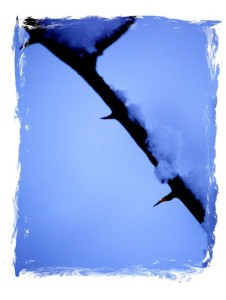 Berry Thorns has been dormant for several months while new roots spread beneath the surface. During this time, I have been like someone carried downstream by a current so rapid that it’s impossible to swim to the shore. When I decided to start Berry Thorns a couple of years ago, I pondered the thing called passion. I believed I should write about something that stirs my passion, and I chose to focus on nature, enjoying its beauty and lamenting the harm it suffers from human behavior.
Berry Thorns has been dormant for several months while new roots spread beneath the surface. During this time, I have been like someone carried downstream by a current so rapid that it’s impossible to swim to the shore. When I decided to start Berry Thorns a couple of years ago, I pondered the thing called passion. I believed I should write about something that stirs my passion, and I chose to focus on nature, enjoying its beauty and lamenting the harm it suffers from human behavior.
Over the past five months, another passion has preoccupied me, to say the least.
I received an unexpected message about a family I had worked with many years ago when they were refugees. Soon we were in touch with each other. The reconnection ignited my passion for refugees, migrants, asylum-seekers, and all whose lives are uprooted by war or other catastrophes.
All of my writing energy since early February has been channeled into writing a book of stories about such people. There are plenty of lives to portray — over 35 million. I don’t know who can write stories about millions. My stories include about a dozen main characters.
My book is nearly finished if a book ever is. Once writing and revising end, formatting begins. Once the book has a cover and a design, my goal is to make it available by September. The title, From the Lives We Knew, comes from a line in a hymn by the British Methodist, Andrew Pratt. This past April, an estimated 800 migrants and refugees drowned because the fishing boat they had hoped would carry them from Libya to Europe capsized. In response, Pratt wrote a hymn, “The Challenge of Migration,” which honors the memory of “the ones who fled from lives they knew.” Pratt’s hymn helped me discover what to call this collection of stories told by and about characters about fleeing From the Lives We Knew.
During the weeks between now and September, I plan to discuss nine reasons for reading my book, for caring about the issues found in these stories, and for joining me in this passion. This passion may lean toward the “Jabbing the Conscience” side of my Berry Thorns slogan, but there’s also beauty to savor in the characters you’ll meet when you read the book. Please “tune in” to Berry Thorns to learn more.
March 26, 2015
Cold Snap Coming
A cold snap is coming. March arrived unsure whether it was a lion or a lamb. The weather waffled. It was hard to judge how things would play out.
Not to trivialize T.S. Eliot, who wrote this line in his epic poem, The Waste Land — wrote it for his friend Ezra Pound in Book I, called “The Burial of the Dead”— but no wonder others have recognized that “April is the cruellest month.”
The days approaching the end of March and celebrating the start of spring were, without a doubt, lambish. It was hot enough to open the bedroom windows overnight. Some people do this all the time, even on winter nights, and especially during summer. With my allergies, not to mention certain critters that take advantage of our unintended invitation to our living quarters, we normally leave the windows shut.
The month isn’t quite finished. Forecasters say the lion will prowl around for a few days. Slide the windows down. Certainly they’ll stay shut over the weekend.
Temperatures will dip well below freezing.
How will it impact what has sprung to life? Eastern-tailed Blue butterflies have taken a keen interest in the weed petals that match their cobalt wings, as well as slightly larger ones that match the daffodils. What does the Eastern-tailed Blue do during a hard freeze? Will its numbers decline as a result of the cold snap? I haven’t counted them so I can’t compare before and after, but I wish the butterflies luck.
As for carpenter ants, jar lids filled with sugar water and Borax convinced them to stay out of our kitchen. Lone rangers still explore the living room hardwood floor. Until I dispatched him a moment ago, one of them was crawling on the arm of my chair. With their 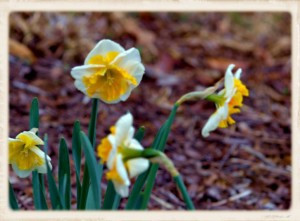 foreknowledge of the cold snap, will they march through the door to get warm?
foreknowledge of the cold snap, will they march through the door to get warm?
Regardless of the weather, birds sing in spring. They have the money to head south for the weekend but most slip into February’s fluffy coat and pursue their agenda, that is, their girlfriend. To slow down their sex drive, a cold snap would have to be severe. After all, spring is the mating season. Ask any teenager.
Pansies in our hanging basket may shudder or shrivel but will revive. Those not yet transplanted can spend the weekend inside. Whether the weather will faze the narcissus blooms is yet unknown. I’ve seen daffodils stand up to past storms.
Nature mocks our desire to cling to spring.
The cold snap can strip blossom-covered trees to their wintertime apparel. So Paula captured a bouquet of ornamental blossoms from the neighbor’s yard for the large vase on our stair landing. Until they’re inside our house, I forget to notice how much those blossoms smell like old rubber tires.
March 16, 2015
Plant Birthdays
It has been six weeks more than two years since we transferred ourselves to the Chattahoochee after a lifetime in urban or suburban settings.
Six and a half years we lived in Northern Kentucky, across the Ohio from Cincinnati. Our long-populated neighborhood nestled floral diversity richer than any I had known while growing up in New Mexico and Texas.
The next six and a half years we were in Western Kentucky, near the Land Between the Lakes. Things bloomed earlier, and more things bloomed, but in my mind, they all went into a fat file folder labeled “flowers.”
After many years back west again, we spent three years in 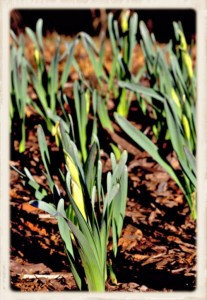 Middle Georgia, where weather and shade prune pines into tall poles supporting needled branches near the sky. Even there, my exposure to flowers came from pots on our patio.
Middle Georgia, where weather and shade prune pines into tall poles supporting needled branches near the sky. Even there, my exposure to flowers came from pots on our patio.
From late March until late October— a good seven months — one after another, new wildflowers make their appearance on the hillside stages; and we have season tickets. We are newcomers. It will take many years to gain the sort of familiarity Aldo Leopold had in mind when he wrote:
Tell me of what plant-birthday a man takes notice, and I shall tell you a good deal about his vocation, his hobbies, his hay fever, and the general level of his education. — Aldo Leopold, A Sand County Almanac
Of hay fever I am terribly aware. As for plant birthdays or blooming dates I’m making mental notes. Not down to the day, but to the week I might see them opening their flowers.
Daffodils lead toward spring. This year’s compound cold snaps kept their blooms huddled under their leaf shoulders. Even when the yellow flowers could be seen, they hunched down timidly until we had a few warm, sunny days. Now they are smiling under the rail fence as if they had never been through a storm.
Middle March brings forth the Narcissus bulbs I planted last fall. They’re not wild, but I hope they’ll enjoy living on the edge of the forest as much as we do.
I suspect Leopold would want me to have learned, by keeping written or mental notes, the range of dates and average date for each particular flower; and to have an accurate estimate of how many species I’ve observed altogether, and how many bloom during each month from April through October.
No. To say he might expect such knowledge isn’t right. Given my background, his expectations would be low, along with his estimation of my appreciation for wild things. Instead, I should say he might wish for me to strive for such knowledge. Which, he would add, should thrust me into conflict with those who neither know nor care — land developers and road builders, for example. I don’t 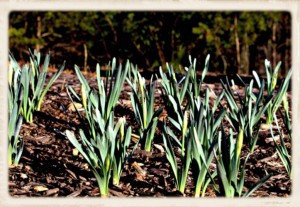 want to get into any arguments, so I hope they’ll leave what’s left of the wildflowers in these parts alone.
want to get into any arguments, so I hope they’ll leave what’s left of the wildflowers in these parts alone.
Meanwhile, I’m expecting those Narcissus blooms to pop open any hour now.
March 10, 2015
Right There in Black and White
What’s black and white and lives in a hollow tree? Downy Woodpeckers, of course! And there’s nothing better than a suet cake to make them feel welcome.
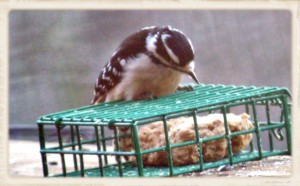 Last year during the snowy weeks, when the little cage birds can grasp and peck away at our suet had been knocked down, whether by a raccoon or a storm, I couldn’t say, I put a suet cake in a pie tin on the small table on the east deck. A Downy Woodpecker hammered right through the snow piled over it.
Last year during the snowy weeks, when the little cage birds can grasp and peck away at our suet had been knocked down, whether by a raccoon or a storm, I couldn’t say, I put a suet cake in a pie tin on the small table on the east deck. A Downy Woodpecker hammered right through the snow piled over it.
Suet is animal fat. Years ago, we made our own suet. As I recall, we used bacon grease and bird seed. Suet melts on a warm day so the kind we made was suet suited for consistently cold weather.
Now we buy suet. Not often, but at least for the hard winter days when the birds seem so grateful for our feeder. It’s designed for year-round use, or so the package says. Last year’s suet was probably cheap. We bought a case of cakes and put the extras under the kitchen sink, I think. Even if I can’t remember where they were, a mouse knew. Mice, apparently, like suet as much as Downy Woodpeckers. I set a chunk down by the dishwasher hose the mouse chewed through and surrounded it with traps. As you guessed, the mouse never bit the bait after I did that.
The birds that patronize our feeders on our east deck 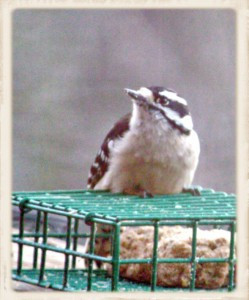 have become pets, more or less. I feel reluctant to leave home for a few days because I hate to neglect them. This year I bought a single cake of high-class suet with meal worms in it at the Blue Ridge Birdseed store. I bet it was made with high-class fat. It gave me pleasure to hang this nice suet cake in the cage, which I had retrieved from the woods. The Downy Woodpecker came to it, along with the White-breasted Nuthatch and Carolina Chickadee. All these like to grasp a vertical surface while they peck away at their food.
have become pets, more or less. I feel reluctant to leave home for a few days because I hate to neglect them. This year I bought a single cake of high-class suet with meal worms in it at the Blue Ridge Birdseed store. I bet it was made with high-class fat. It gave me pleasure to hang this nice suet cake in the cage, which I had retrieved from the woods. The Downy Woodpecker came to it, along with the White-breasted Nuthatch and Carolina Chickadee. All these like to grasp a vertical surface while they peck away at their food.
Unsurprisingly, the cage once again disappeared from the deck rail within two days. I found it on the ground outside the basement door about twelve feel below. Meanwhile, the Dark-eyed Juncos, Northern Cardinals, and American Goldfinches were getting after scattered suet crumbs. The hanging chain was lost so I decided to set the cage with the remaining suet up on the deck rail and take my chances.
Now the Downy Woodpecker brought his mate. Mrs. Downy has a black cap, while Mister has a red spot.
The red spot reminds me of tomato juice, in which people bathe after a close encounter with another creature that’s black and white and lives in a hollow tree, the Eastern Spotted Skunk. It must be on the prowl for underground mice, beetles, or yellow jackets. Its musky smell keeps me alert for its presence. And if it hauls away our suet, I’m not going to put up a fight.
March 5, 2015
Overture to Spring (by the Creepy-Crawlies)
When my friend Kathie lived in Memphis, I counted on her weather reports for a clue about what the westerly winds would blow this way. Then she moved to Asheville. Even now, she has a knack for sending us her weather, chiefly via the northerly winds of winter.
Yesterday, for instance, Kathie mentioned having “blue sky, puffy clouds, and a fresh breeze blowing through the open doors and windows.” I looked out our front windows and saw dreary drizzle under dark skies. Yet sure enough, though we got but one-fifth the respite from winter Kathie enjoyed, we soaked up the warmth. I found myself sweating in my shirtsleeves.
Our three-hour spell brought out what my friend Judy affectionately calls the “creepy-crawlies.”
Half a dozen carpenter ants made their way from the wood pile or tunnels in our infrastructure to our living room floor. Ladybugs, which had curled up for a few weeks on baseboards and window sills, flitted around pondering whether to head outdoors.
Which is precisely what my dog Opie and I did. As we walked to Fox Mountain Crossing, our routine round trip, we saw a fat brown centipede crossing the road. I told him, Mr. Centipede, you’re in for a rude surprise when winter boomerangs this way. He paid no attention.
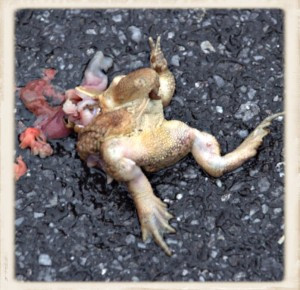 Fifty feet further, we saw a little yellow frog, not much bigger than a tadpole, whose tragic end came with his first effort to cross the road. Still shaking our heads in mourning for the little fellow, we came to a sizeable puddle, where a larger toad or frog was kicking and hopping up from the bottom of the pool and having a whee of a time. He really cheered us up. Before long, Opie was digging his nose into leaves, collecting seeds in his fur, and trying to roll around to bring home new scents.
Fifty feet further, we saw a little yellow frog, not much bigger than a tadpole, whose tragic end came with his first effort to cross the road. Still shaking our heads in mourning for the little fellow, we came to a sizeable puddle, where a larger toad or frog was kicking and hopping up from the bottom of the pool and having a whee of a time. He really cheered us up. Before long, Opie was digging his nose into leaves, collecting seeds in his fur, and trying to roll around to bring home new scents.
It’s already March. A warm spell of merely a few hours rings the approaching chimes of spring. In the minds of ants, ladybugs, centipedes, toads and frogs, it was time to offer, if not a full overture, at least a sneak preview of spring’s symphony. With them, we savored the appetizer even if we would have to wait for the full course.
Uh-oh. The tune that came to mind was the emotionally ambivalent spiritual, Soon I will be done with the troubles of the world . . . Goin’ home to live with God. To that tune, these words worked their way up from my subconscious:
Soon it will be time for the chiggers and the ticks, the chiggers and the ticks, the chiggers and the ticks.
By evening we were experiencing a fulfillment of Bob Dylan’s old song, “A Hard Rain’s Gonna Fall.” A squirrel scrambled across the road toward his nest. A cottontail darted in front of my headlights. I straddled a toad with my tires. It’s getting cold again. I wonder if the creepy-crawlies will decide they’ve presented a long enough preview of their spring overture. Especially the carpenter ants.
March 3, 2015
Blue Blows a Belief about Belonging
For a canine like Blue, the word “belong” fits fine, mostly. Take one meaning — “to go along with.” When she’s not busy exploring for raccoons or ‘possums, Blue will go along with anyone.
Our friends Tom and Jeanie came to visit. Jeanie gets credit for my interest in birds. She had visited our cabin before we lived here full time and had heard and seen a Piliated Woodpecker, the very caricature of the cartoon character named Woody. One of my late mother-in-law’s put-downs was “trying to but can’t,” as in “That dolled-up girl is trying to but can’t.” After witnessing real Piliated Woodpeckers in the flesh (or, if you prefer, in the feather), you’d say “trying to, but can’t” describes Walter Lantz’s famous animation and its equally famous laugh as recorded by Mel Blanc. Nice try, but how could Hollywood match the hilarity of the real thing?
Jeanie brings binoculars and, more recently, her new Nikon camera. So I took her on a short hike up Whispering Lake Drive to show her where I’d heard the gentle song of the Wood Thrush. Instead of the Wood Thrush, however, we heard a baying Beagle as it raced down the mountain across our path, practically across the tops of our boots, ignoring us to chase whatever scent its nose had picked up. Tagging behind the Beagle came another dog, which by comparison, seemed enormous.
Suddenly the larger dog decided she belonged with Jeanie.
 With no collar or tag, we couldn’t tell if she was an absolute stray or simply lost. She wouldn’t leave our side. She followed us to my cabin. She came up the steps with us onto the deck. She would have come inside, but we slid in and closed the door. She circled the cabin on the deck for ten minutes and peered in each glass door before letting go of her presumed welcome.
With no collar or tag, we couldn’t tell if she was an absolute stray or simply lost. She wouldn’t leave our side. She followed us to my cabin. She came up the steps with us onto the deck. She would have come inside, but we slid in and closed the door. She circled the cabin on the deck for ten minutes and peered in each glass door before letting go of her presumed welcome.
Several weeks later, she came back. “I think it’s the same dog,” I said. By this time, she had a collar and a tag with the name “Blue” and a phone number, which Paula called. “She’s a sweetheart,” Paula said, “but she gets into our things.” Paula was referring to the knocked-down birdbath and the fat footprints on the hot tub cover. “Does she belong to you?”
Now the word “belong” meant something else — “to be the property of.”
It’s a matter of responsibility. Like us, our new part-time uphill neighbors found that Blue belonged to anyone and everyone. Unlike us, since Blue made herself a part of their family, which already included a Swiss Mountain Dog named Bailey, they took responsibility for naming her, having her spayed, getting her shots, feeding her, and giving her a bed at night.
Blue is blessed to be the property of our neighbors, but as far as she cares, she belongs to the mountain and everyone on it, just as the mountain and all of its creatures, including people, belong to her.
January 29, 2015
Privyleged
The meal we eat after hiking one day proves to be the meal we carry in our gut the next day.
(Readers of these posts have no qualms about a topic discussed by aging adults —gastrointestinal stories. Let the squeamish and prudish exit now.)
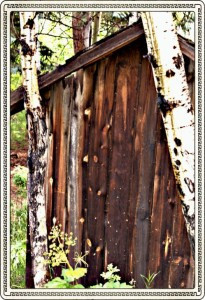 Beyond a trailhead, where there’s a well-tended outhouse, if not flush toilets with running water, a hiker worries about where to go to the bathroom. A female may envy the male on the trail for standing while taking care of business, but now we’re talking about the business where the playing field is level.
Beyond a trailhead, where there’s a well-tended outhouse, if not flush toilets with running water, a hiker worries about where to go to the bathroom. A female may envy the male on the trail for standing while taking care of business, but now we’re talking about the business where the playing field is level.
Unlike John Muir, who took off for a long day in the high Sierras with no more than a slice of bread, today’s hiker loads up on fuel even if breakfast comes hours before sunrise. Producing energy from this intake results in discarding, shall we say, leftovers.
Once digested, food asks to be excused from the body.
Bob and I laugh about how, sixteen years ago, we camped out overnight at Jumbo Rocks in Joshua Tree National Park and got up before dawn to climb Ryan Mountain. Since we would return to the campsite after hiking, we left our gear behind. Nature called for Bob so he sought a hiding place among the bare rocks while I detained oncoming hikers. He seemed good-natured upon his return considering that he’d been equipped with no more than his trowel and an energy bar wrapper.
On our trek up Mount Whitney a few years ago, Doctor Bob made sure I had a bedtime fiber drink and then a bounteous breakfast before our marathon journey. The sun had not yet risen when nature called my name. I had resolved to leave no trace of our trek. Resolutions, they say, are made to be broken.
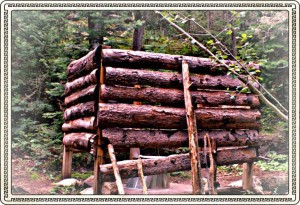 In Colorado, on our way down from Ouzel Falls, after counting on Bob’s trowel earlier, I was delighted to happen upon a stainless steel potty with a split log wall surrounding three sides. It even came with tissue! True luxury!
In Colorado, on our way down from Ouzel Falls, after counting on Bob’s trowel earlier, I was delighted to happen upon a stainless steel potty with a split log wall surrounding three sides. It even came with tissue! True luxury!
Better yet, near Odessa Lake, I stumbled upon a new option — the composting toilet.
It was a foreign object to me. It sat on a platform exposed to onlookers though tucked away from the main trail and campsites. When I got home and went walking with my friend who retired from the Forest Service, I learned that composting toilets are being installed across the country.
This toilet’s instructions were simple enough. First, try not to pee into the toilet for that creates an undesirable odor. No problem; campers and hikers become proficient at urinating somewhere behind a tree. Second, see the sawdust? Take the scoop and cover your poop. Third, close the lid and go away.
Adding red wriggler worms speeds things up, but in the cold atmosphere at high altitude, the toilet requires at least three years to finish its business. Still, it’s more sanitary than an outhouse although I’d object to using it to fertilize a vegetable garden.



